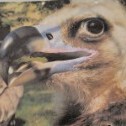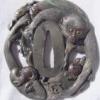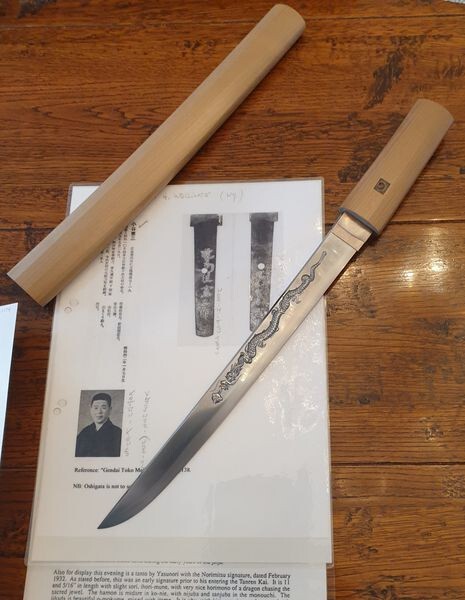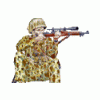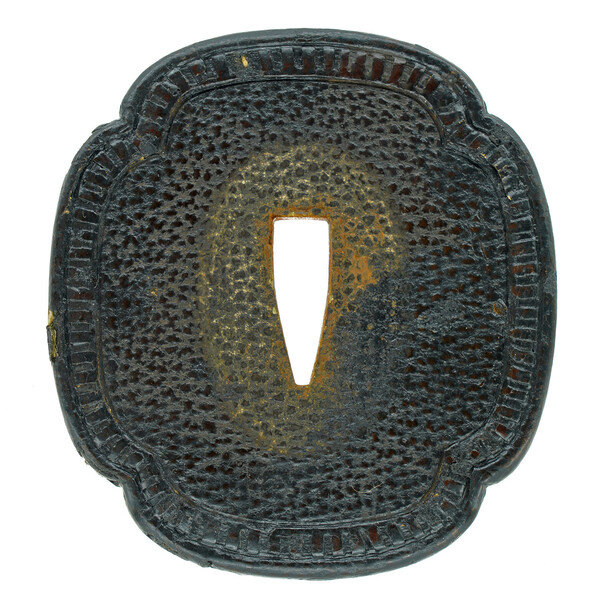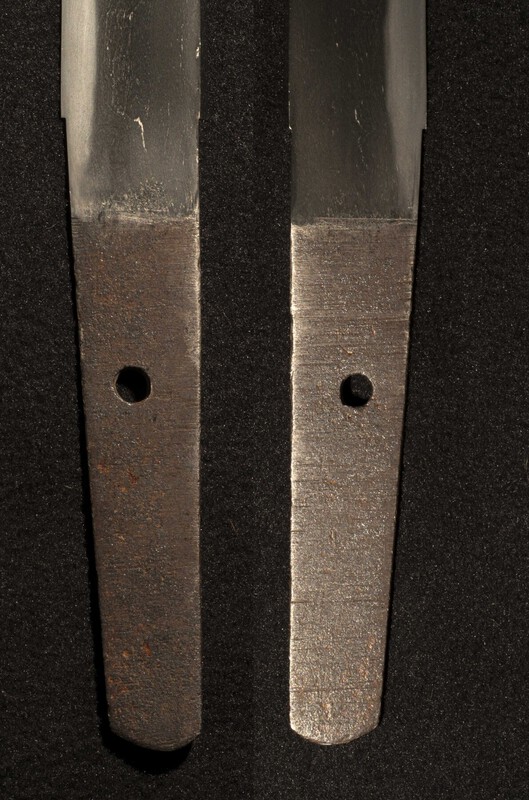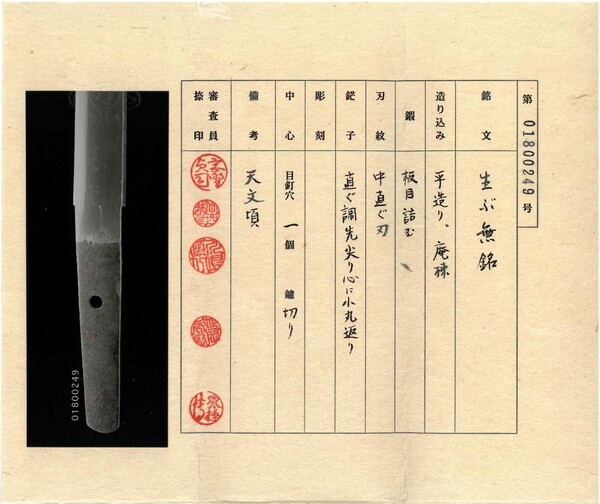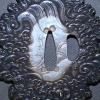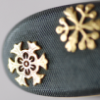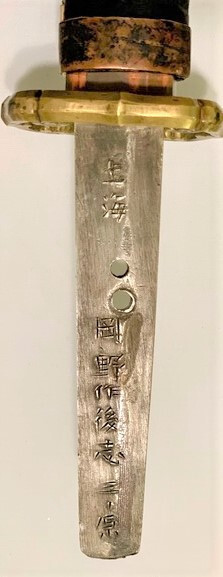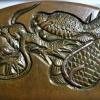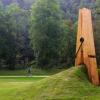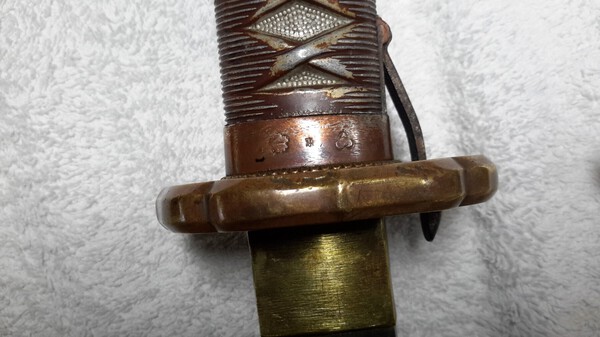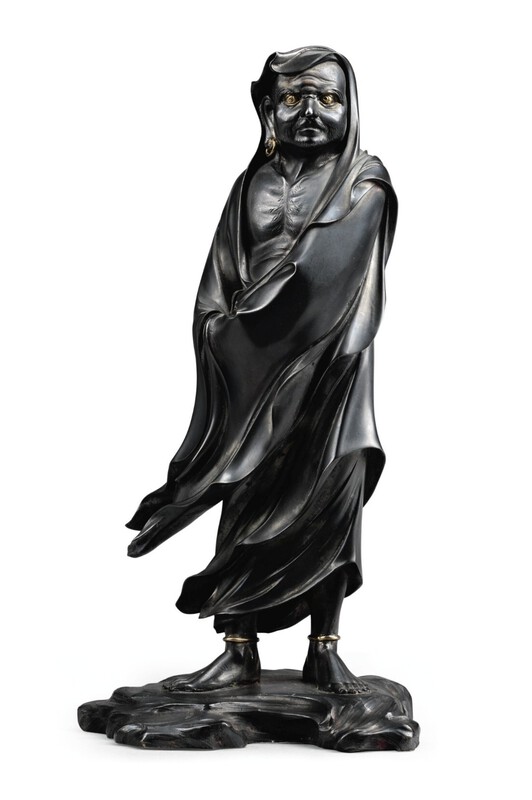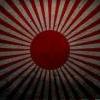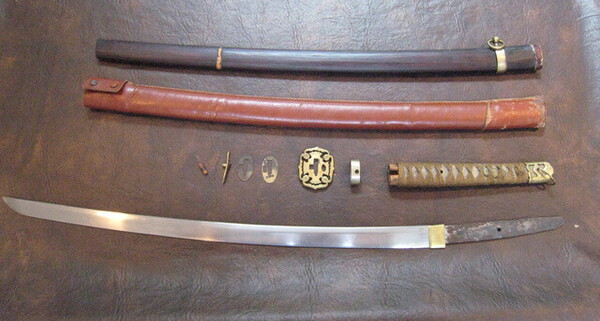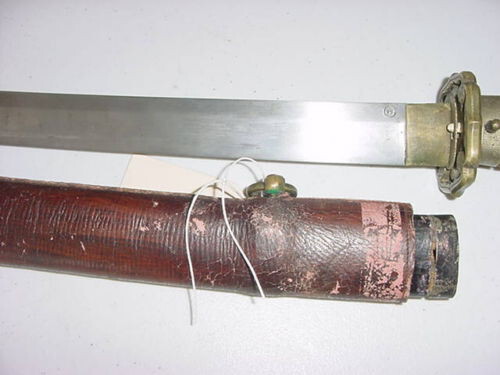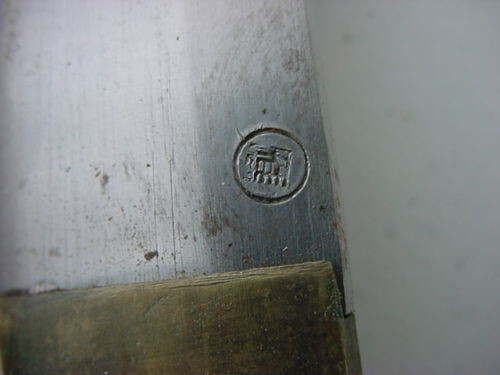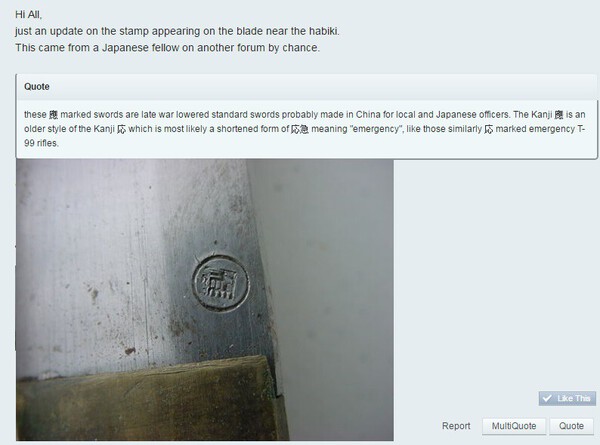Leaderboard
Popular Content
Showing content with the highest reputation on 01/08/2022 in all areas
-
I thought I would share this legitimate Generals sword with the board. It came from the Son of an army vet who was a part of the early occupation. The son told me his father traded an elderly Japanese general a 10 lbs sack of sugar for it. He didn't know the tassel denoted the rank until I told him. Enjoy! Bill Rannow Mpls, MN7 points
-
please enjoy with luck and the help of a former friend my cherished Yasunori( Kenzo Kotani san), Tanto, long in the collection of my Friend Herman Wallinga,who sadly passed away to much early....!!! signed Geishu( Geinan) ju Norimitsu saku and "showa shishi nen ni gatsu hi" Febuary 1932 This is his early signature prior to his entering the Tanren Kai It is 11 and 5/16 in lenght Hamon is beautiful midare in ko-nie, with nijuba and sanjuba in the monouchi, slight sori beautiful jihada of O mokume, mixed with Itame...Ji nie ubu Nakago with very nice horimono (not atobori) and dates to the dates to the baldes time of production..." dragon chasing the scared juwel"5 points
-
Unfortunately I think this piece looks questionable. However, as far as your question about resources for translation, I am copying over an earlier post below. Best regards, Ray Kanji list: You can find many of the commonly seen kanji in swordsmith names here at the link below. Take the time match each character against what you see in your inscription (nakago or on the associated kanteisho). http://www.japaneseswordindex.com/kanji/kanji1.htm Locate kanji by radical: If you have been unable to locate the kanji in the list on Richard Stein's website, then try to find them with this search tool. Look at the component radicals in each character, and as you multi-select radicals you can a more refined list of candidates for the kanji you are looking for. https://kanji.sljfaq.org/mr.html Swordsmith index: Once you have one or more matching kanji identified, enter them into this database to locate entries that are candidates for your smith. https://nihontoclub.com/view/smiths/meisearch Japanese provinces: This is helpful with inscriptions where the smith has identified where he worked, produced a specific sword or identified his title. https://swordsofjapan.com/nihonto-library/Japanese-provinces/ Japanese nengo: Helpful to identify the time period for nengo (date inscriptions) https://swordsofjapan.com/nihonto-library/Japanese-nengo/ Kanji flashcards: This is a robust set of kanji flashcards that focus on Nihonto-related kanji. A must have. https://www.japaneseswordbooksandtsuba.com/store/books/b109-kanji-flashcards5 points
-
Something rotten in Shanghai (top two characters = 上海) Not a samurai sword.3 points
-
This is a good explanation. https://markussesko.com/2018/07/08/altering-tsuba-signatures/ The text on the Tokka site explains this as well, so Markus's explanation (and David's comment) also serve as a good translation of what is on the Tokka site. Not a word-for-word translation, but the explanations are the same.2 points
-
2 points
-
You don't post a pic of the whole blade. But looking at the saya, looks like it is a tanto? If so, and with that shape and style, it would at best be the front end of a broken katana. Shinogi zukuri and tanto do not go well together. Still, not a huge amount spent, so if you like it...and make sure your next one is a big step up.2 points
-
2 points
-
Dear John. It seems clear that this is orikaeshi mei, if the idea of tanzaku mei comes form the torokusho then I think we can safely ignore it. All the best.2 points
-
Bruce you are getting really good at translating! Tom2 points
-
So the first blade isn‘t a Wakizashi but a short Katana in Tachi mounts.. seems I got it as much wrong as possible! Thanks for clearing this. And special shout-out to @Ray Singer and his incredible deciphering skills! If I found the correct one it appears there were two (father and son) using this name, is the first generation the correct one that I had identified? Prior going to bed I wiped down the koshirae of both with oil soaked clothing. Now they look much better, first one now is black with a light brown touch. Just did the better pictures of the blade, this time with the camera and not with the mobile. They do it more justice. Notice I slided the front swivel ring on the scabbard a bit back in the second picture, to show it isn't sitting on the retaining ring as it should be. I hope this allows to give a better judgement of the blade.2 points
-
I am not a koshirae guy but I think that style is called kawa-tsutsumi (covered in leather). To my eye that tachi koshirae in overall might be the most collectible thing out of the lot.2 points
-
Hi Richard! The painted kanji are numbers "96" which often matched stamped numbers on the metal fittings. They were used to keep all the custom fitted parts together during polish and assembly. Someone will help with the smith's name. I've righted the photo to make it easier to read. My guess is 俊治 (Toshiharu) http://japaneseswordindex.com/oshigata/toshharu.jpg2 points
-
Daimyo families had primary and secondary mon - sometimes as many as four - truth is that unless the particular mon is singularly unique to a single family you cannot ascribe any mon to any person, family or line. Should you find an item of quality that includes two or more mon then the probabilities are much higher but it is still just supposition without other evidence. Swords had an incredible currency over the years - some families patronized their local swordsmiths and boasted many blades by their hometown artist in their collections - many families had swords from all over and almost none from local smiths, even when they were directly employed by that family... -t2 points
-
I will take Ray one step further and provide a link to his blog post that the video is based upon. 5 Guidelines for the Beginning Collector of Japanese Swords And since I am looking at his website, I will provide the link to the articles written by the late Jim Kurrasch. Jim Kurrasch articles As a former editor and publisher once told me, it is better to beg for forgiveness than to ask for permission!2 points
-
1 point
-
I think it is indeed Umetada but using these kanji - 梅忠 See few references here: (unfortunately couldn't find NBTHK paper for mumei using this kanji fast) https://www.kandatoukodo.com/tousougu/tsuba42.html https://tokka.biz/fittings/TS720.html1 point
-
Rob, how about a picture of the scabbard mouth showing the serial number? Bruce will give you a big "Thanks" to add to your score unless of course he has exceeded his limit again! Below is a link to 47961 which is the next closest to the one above. Arsenal Stamps., Page 181 point
-
Good find Pietro. I get the impression that it's been heavily buffed before patination. I fully agree with your assessment, and thank you for adding it here as it can teach us quite a bit. It does superficially appear quite good, and I think there's some hand carving on the face and to create the chest hair, but I think otherwise it's lustre is only skin deep and it would look a lot worse in person. The dark patina can hide a lot of flaws from the camera. I think it's estimate is on the money. It shows it's flaws more clearly in this image, which leads me to think that the figure was buffed and this area wasn't reached due to being sharply recessed.1 point
-
1 point
-
Thank you for the pictures John, that makes it lot clearer. I think it makes things interesting. I know that you should focus on the details on the sword rather than doing speculative stuff but I'll give some reasoning here. As the sword seems to have been signed on sashi omote side (way katana are generally signed) and the signature has been folded over. Based on the 15 signed ōdachi & tachi I have on record for Tomomitsu, he signed his swords on haki-omote side (way tachi are normally signed). I attach here an example of orikaeshi-mei by Tomomitsu and you can see the signature is folded on the opposite side as on the sword we are discussing. Signing tachi on sashi-omote side was never really a big thing in Bizen and signature on this side started to appear more during the early Muromachi period. And as the signature seems to have been thought important enough to fold over I would think it could have been made by a good smith. NTHK going for Tomomitsu is a small headscratcher for me personally as due to this type of orikaeshi-mei I would look more in towards early Muromachi if thinking of Bizen. Of course that could be totally ignored in evaluation but I think it is important factor. Unfortunately I can't say too much about details on the blade from the pictures (and I am not skilled enough in detail stuff anyway). However based on the shape & size, orikaeshi-mei and horimono I think it is an interesting item.1 point
-
1 point
-
1 point
-
1 point
-
I'm no expert in tosogu, no doubt, but it could be older. Many early ones get hitsuana added later. This one seems to have escaped that since the sukashi design uses up the room for ato hitsu ana.1 point
-
By the way, it looks like the sword had at least two more holes in the tang - you can see part of them on the folded part of the mei. By my count, there were six holes at least. This is a good sign of a well loved and often remounted sword. Sorry, I just noticed that Ray already flipped the photo. In any case, since the length is currently 29.5 inches and based on the last hole (the distal one in the orikaeshi mei), it wouldn't surprise me if this sword was 34" or more (86-88 cm), quite a large sword!1 point
-
It smells… Nakago looks wrong, shinogi (central ridge linel) looks wrong, yasurime (file marks) look wrong. It looks like a gunto but the mei (signature) is far from the ones I have seen. of course, I admit I don’t know a lot about gunto🙂1 point
-
Hmmm…., 土海岡野作後志三口?? If you ask me….that doesn’t look good!1 point
-
1 point
-
1 point
-
Well, I wouldn't say "really good"! After 7 years of seeing these on the forum, I'm starting to recognize some of them, at least enough to find them on Japaneseswordindex!1 point
-
Yes, the kaigunto seem to have a slight majority of their blades with Toyokawa, but there are quite a few with blades from everywhere else. We recently discovered one with a Mantetsu blade in it!1 point
-
1 point
-
Hi Georg, the Tachi is really nice, maybe it would be good for you to buy it to remember your friend by?1 point
-
Hi Brian, I'm sorry if what I wrote seemed completely off topic, I didn't realise quite how it read but did intend for it to be applicable. I do see a clear difference in quality between the statue in the first post and one further down in Alex's collection. The difference is in the chasing, so may not be immediately apparent for someone who doesn't know quite what they're looking for. I think the mould fidelity is similar, but the chasing isn't as well executed. Neither is hand carved, but the statue at the top appears to be better chased and filled than some other Japanese bronzes I've seen for sale. I've circled the relevant area to show the detail: This kind of thing requires labor to fix, after the statue has been cast, and can add significant cost. I'm not sure if this adds any value to the discussion, but I think I've at least clarified what I intended to say. Toes are always a good sign, a lack of pock-marks is also worth a premium, just as when selecting a wife. Additionally, a thick, heavy and dark patina can hide flaws (at least from the camera). To link back to the above video, you can usually tell at a glance the nature of the techniques used and thereby roughly estimate the man hours involved. I thought it worthwhile to lay out the process as it provides some anchors from which we can discuss further. Everything is somewhere along the scale between the two extremes, it's just a case of assessing how far along. At the low end, a mass market bronze from a Chinese foundry. These cost less than $10 to produce. The detail is quite good overall, especially considering the price, but the skin has severe acne scarring and dermatitis. Adam's would be in the region of $500 - $1k. Moving up into the range of $5k - $10k brings statues with significant hand finishing. Moving up into the $20k - $30k range brings finely chased details and gilt engraving. Maybe this visual representation is of some use.1 point
-
Hi Khalid, Pretty sure this is a broken sword and you're looking at the lower half. This is close to being worthless in an informed market. Grey1 point
-
Khalid wrote: > I did get a earful from a few local collectors on having a unsigned blade restored. Congratulations on following your own path. It is the best way in the long run to learn about Nihonto - i.e., make your own mistakes. It took me many years of 'doing it on my own' and I've written about it before. Here are some sayings I give credence to: "To thine own self be true", "The quality is remembered long after the price is forgotten". And my own "Never shell out money on a Japanese sword unless you can afford to lose it totally". You do learn quickly this way!!! Khalid, I have been collecting for 55 years on a shoe-string budget and am never going to get back all the money I've put into it - BUT - the journey has been priceless!! BaZZa. Oh, and some unsigned swords may turn out to be o-suriage mumei blades from the Kamakura or Nambokuchou period - I have two of them!!1 point
-
I think this is Oshikuru. The Demon Samurai. Sorry...just a lame joke. This episode was repeated so many times on SA tv.1 point
-
I have never regretted joining the To-Ken Society - in fact one of my best decisions ever, together with following this portal/community for well over 16-17 years. The NMB provided theoretical knowledge while the To-Ken meetings enabled me to see swords and koshirae first hand and hear more experienced people describe these items while teaching us. Of course, once one builds an own network of contacts, then it becomes easier to navigate the field solo. But still, the social and educational elements are valuable. In informal and interpersonal meetings, one can learn and share a lot more than publicly..... People sometimes focus too much on price. Price is an important element of a purchase but so is the quality of the item, the guarantees, the deferred purchasing methods that some offer, the trustworthiness, the investment in a relationship with someone who might offer you items that will never be published officially on a website et cetera. Also, my main piece of advice is to defer a purchase until you can make your own judgment rather than rely on judgements by others. If it takes years, so be it. It might be better than burn money, burn bridges/relationships, get disappointed, acquire something that in a year you will not like anymore as you have changed your mind or did not know what you were buying in the first place.1 point
-
Dear John. Jussi is referring to the nakago jiri, a close look will confirm whether the signature is gaku mei, a separate piece of metal with the mei inlaid into the nakago, or orikaeshi mei, a thinned section with the mei folded over and inlaid. We have been referring to this as tanzaku mei which is usually a term that applies to small pieces of metal fixed into the back of menuki, it's not a usage I have come across with sword signatures. Gaku mei are very prone to be false signatures, arguably orikaeshi mei less so. I have convinced myself that this sword is orikaeshi mei and look forward to seeing where you go with this decision. All the best.1 point
-
Welcome to the forum John! I agree what others have said about sending to NBTHK, if sending items to shinsa in Japan would be easier for me, I would try to get several attributions to the 2 mumei swords in my collection. In my opinion that is an interesting sword, what kind of measurements it has? I am having hard time figuring out if it has orikaeshi-mei (folded over signature) or gaku-mei (inserted signature), as it is so corroded I can't see anything (I know Ray is like a detective in figuring these out). Do you happen to have a picture of the end of the tang?1 point
-
Maru-gata, shinchū, Image of a mountain scene Echizen-jū Hide something. Can't read the name of the appraiser. It isn't one of the big names. Yanagawa Mantō 柳川万東? Matsugawa Mantō? Katsuragawa?1 point
-
Hi John and welcome from another UK-based new-starter. As you've already sussed-out, this is a great place to learn and get advice. Advice can often be contradictory, but the fact that most members provide a good rationale for their views means that you (usually) get a good balanced argument on which to make your decisions Cheers, Jon1 point
-
Welcome to Khalid and John. You have found the right place. Lots of wonderful people here. I have found all the time I spend on this board to be very worthwhile.1 point
-
1 point
-
1 point
-
I wasn't going to get into this because it opens a bit of a can of worms... but oh well. There are a heap of oddities around pattern 5 swords. I have one of these, as Trystan somehow remembered! Mine has number 297 (pretty sure or maybe 2X7?) On the saya. However, it does have a serial number on the blade, very faint. 300103 I'm guessing. Last number is half stamped but 3 is likely. It's in the Jinsen font too. To head off the question, no it is not a pattern 6 blade in pattern 5 mounts. I can't quite tell... maybe a single stamp on the fuchi... it's at the point I can't differentiate between a dent and dust or a stamp. Now... I also have another example with no marks at all on the blade, but the serial number on the saya is 251125. No arsenal marks I can find. So not quite fitting the what Tristan has, but probably from around the same period.1 point
-
1 point
-
The last time these were discussed here and elsewhere the consensus was that they are guenuine WW2 swords and seem to come in two grades. The one Bruce posted is the lower grade, the one you have posted is the higher grade with the plum blossums. Made in China during the war. There have been a half dozen threads about these on NMB that you can find with some careful looking. There was a good discussion on gunboards forum about these. I'm a bit too sick to find that ancient thread right now. Stegel was involved and can likely find it. Or like I said, a careful search here will find a wealth of previous discussions.1 point


